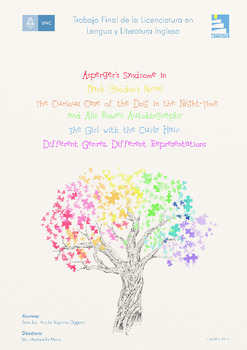| dc.contributor.advisor | Mariela, Mora | |
| dc.contributor.author | Segovia Oggero, Sara Lia Noelia | |
| dc.date.accessioned | 2019-10-10T14:47:15Z | |
| dc.date.available | 2019-10-10T14:47:15Z | |
| dc.date.issued | 2018 | |
| dc.identifier.uri | http://hdl.handle.net/11086/12895 | |
| dc.description.abstract | Since the end of the 19th century and throughout the 20th century, writers such as Charles Baudelaire, William Faulkner, Allen Ginsberg and Toni Morrison provided those who were considered outcasts with a voice. They introduced in their works the accounts of those who were excluded or hidden so that society could become aware of their existence and their experiences. Their works encouraged changes in the way individuals look at and understand each other, which enabled those who were considered “different” to claim their right to be seen and heard. People learnt about people.
In this final research study, Mark Haddon’s novel The Curious Incident of the Dog in the Night-Time and Alis Rowe’s autobiography The Girl with the Curly Hair are explored and analysed to establish how Asperger’s syndrome is represented in contemporary literature. | es |
| dc.language.iso | eng | es |
| dc.rights | Attribution-NonCommercial-NoDerivatives 4.0 Internacional | * |
| dc.rights.uri | http://creativecommons.org/licenses/by-nc-nd/4.0/ | * |
| dc.subject | Autismo | es |
| dc.subject | Síndrome de Asperger | es |
| dc.subject | Rowe, Alis Girl with the curly hair | es |
| dc.subject | Haddon, Mark 1962- Curious case of the dog in the night-time | es |
| dc.title | Asperger’s syndrome in Mark Haddon’s novel The curious case of the dog in the night-time and Alis Rowe’s autobiography The girl with the curly hair : different genres, different representations | es |
| dc.type | bachelorThesis | es |





